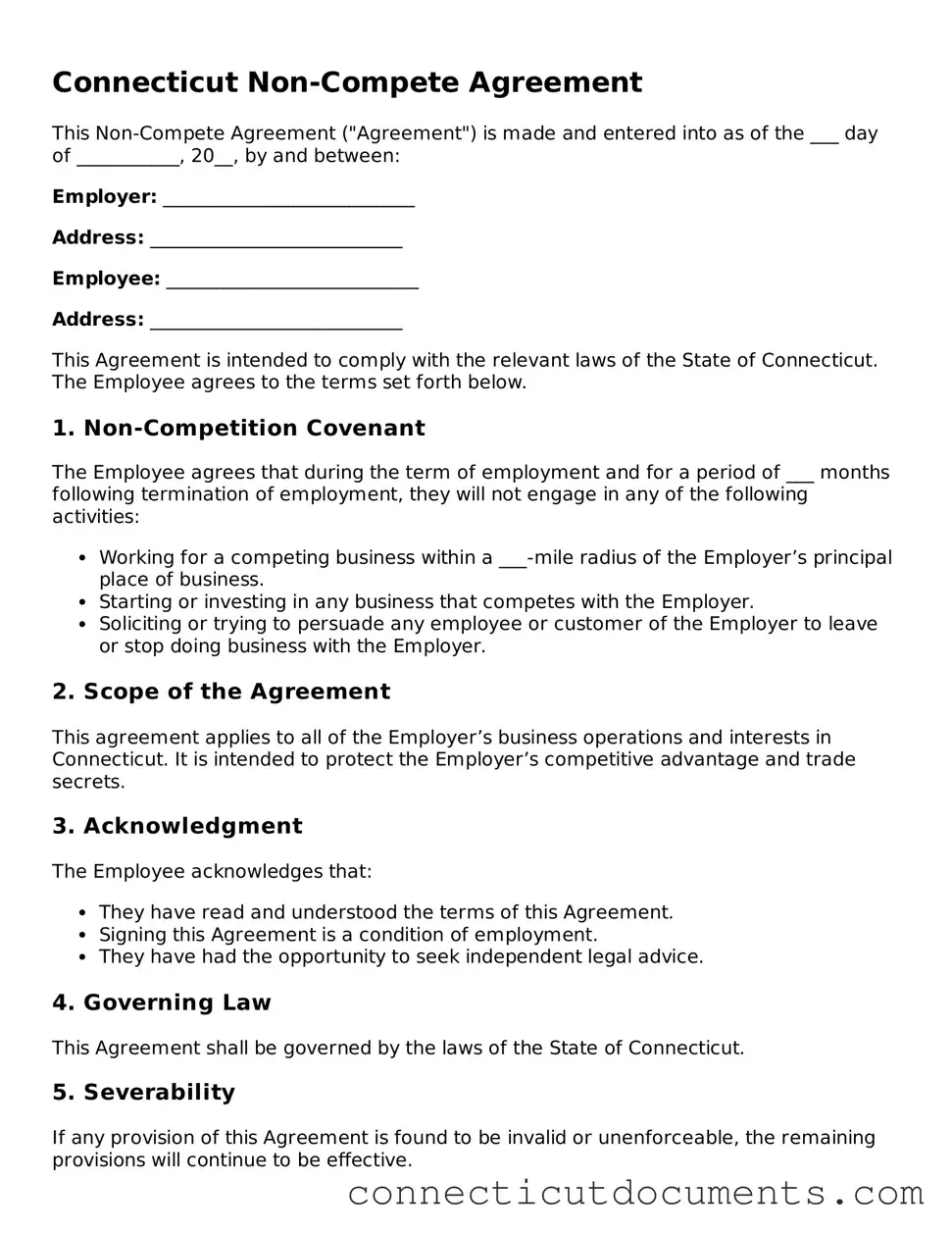What is a Non-compete Agreement in Connecticut?
A Non-compete Agreement is a legal contract between an employer and an employee. It restricts the employee from working for competitors or starting a similar business for a specified period after leaving the company. This agreement aims to protect the employer's business interests and trade secrets.
How long does a Non-compete Agreement last in Connecticut?
The duration of a Non-compete Agreement can vary. Typically, it lasts for one to two years. However, the length must be reasonable and not overly restrictive to be enforceable. Courts may consider the nature of the job and the industry when determining what is reasonable.
Are Non-compete Agreements enforceable in Connecticut?
Yes, Non-compete Agreements can be enforceable in Connecticut, but they must meet specific criteria. The agreement must protect legitimate business interests, be reasonable in scope, and not unduly restrict the employee's ability to earn a living.
What factors do courts consider when evaluating a Non-compete Agreement?
Courts look at several factors, including the duration of the restriction, geographic area covered, and the nature of the employee's work. They also consider whether the agreement protects the employer's legitimate business interests without imposing an unreasonable burden on the employee.
Can I negotiate the terms of a Non-compete Agreement?
Yes, you can negotiate the terms before signing. If you feel that the restrictions are too broad or unfair, discuss your concerns with your employer. It is essential to reach a mutual understanding that satisfies both parties.
What happens if I violate a Non-compete Agreement?
If you violate a Non-compete Agreement, your former employer may take legal action against you. This could include seeking an injunction to prevent you from working for a competitor or claiming damages for lost business. Understanding the potential consequences is crucial before signing.
Can a Non-compete Agreement prevent me from working in my field entirely?
Not necessarily. A well-drafted Non-compete Agreement should only restrict you from working with specific competitors or within a certain geographic area. It should not prevent you from working in your field altogether, as that would likely be considered unreasonable.
What should I do if I believe my Non-compete Agreement is unfair?
If you believe your Non-compete Agreement is unfair, consider seeking legal advice. An attorney can help you understand your rights and options. They can also assist in negotiating terms that are more favorable to you.
Is there a way to get out of a Non-compete Agreement?
Yes, there may be ways to get out of a Non-compete Agreement. This could involve negotiating a release with your employer or proving that the agreement is unenforceable due to its terms. Consulting with a legal professional can provide guidance tailored to your situation.
